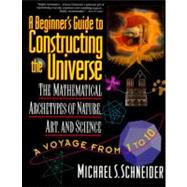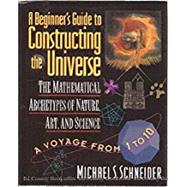A Beginner's Guide to Constructing the Universe: The Mathematical Archetypes of Nature, Art, and Science

A Beginner's Guide to Constructing the Universe: The Mathematical Archetypes of Nature, Art, and Science
- ISBN 13:
9780060926717
- ISBN 10:
0060926716
- Edition: 1st
- Format: Paperback
- Copyright: 02/19/2010
- Publisher: HarperCollins Publications
.svg) Rent
From $10.00
Rent
From $10.00
List Price $19.99 Save
| TERM | PRICE | DUE |
|---|---|---|



List Price $19.99 Save $0.70
In Stock Usually Ships in 24 Hours.
We Buy This Book Back!
Free Shipping On Every Order
Note: Supplemental materials are not guaranteed with Rental or Used book purchases.
Extend or Purchase Your Rental at Any Time
Need to keep your rental past your due date? At any time before your due date you can extend or purchase your rental through your account.
Summary
The Universe May Be a Mystery,
But It's No Secret
Michael Schneider leads us on a spectacular, lavishly illustrated journey along the numbers one through ten to explore the mathematical principles made visible in flowers, shells, crystals, plants, and the human body, expressed in the symbolic language of folk sayings and fairy tales, myth and religion, art and architecture. This is a new view of mathematics, not the one we learned at school but a comprehensive guide to the patterns that recur through the universe and underlie human affairs. A Beginner's Guide to Constructing, the Universe shows you:
-Why cans, pizza, and manhole covers are round.
-Why one and two weren't considered numbers by the ancient Greeks.
-Why squares show up so often in goddess art and board games.
-What property makes the spiral the most widespread shape in nature, from embryos and hair curls to hurricanes and galaxies.
-How the human body shares the design of a bean plant and the solar system.
-How a snowflake is like Stonehenge, and a beehive like a calendar.
-How our ten fingers hold the secrets of both a lobster and a cathedral.
-And much more.







